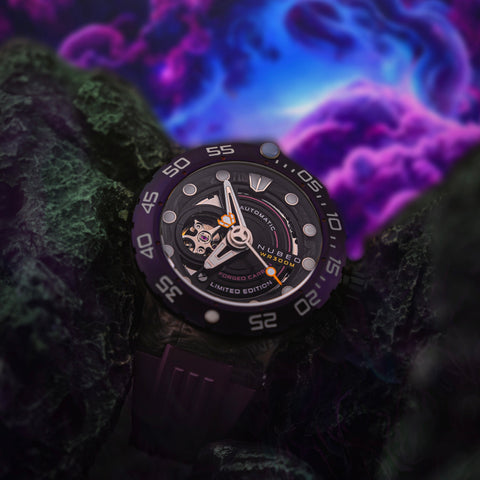In the world of advanced materials, forged carbon fiber has emerged as a revolutionary choice, offering a combination of strength, lightness, and unique aesthetics. The process of creating forged carbon fiber involves intricate steps that transform raw materials into a finished product that pushes the boundaries of traditional manufacturing. Join us as we delve into the fascinating journey from raw materials to the creation of exquisite forged carbon fiber products.
Forged carbon fiber: Raw Materials
The journey begins with the selection of high-quality raw materials. Forged carbon fiber primarily utilizes polyacrylonitrile (PAN)-based carbon fibers. These fibers are chosen for their exceptional strength and modulus, making them ideal for applications where lightweight and robust materials are crucial. The quality of the raw carbon fibers sets the foundation for the entire manufacturing process.
Precursor Preparation:
The chosen carbon fibers undergo a precursor preparation process. This involves treating the fibers with a stabilizing agent at high temperatures, typically in the range of 1500 to 2000 degrees Celsius, in an inert atmosphere. This step stabilizes the molecular structure of the fibers, preventing them from degrading during subsequent processing.
Carbonization:
The stabilized fibers then undergo carbonization, a process where they are exposed to even higher temperatures, often exceeding 2000 degrees Celsius. This step removes non-carbon elements from the fibers, leaving behind a structure primarily composed of pure carbon. The carbonization process is critical for enhancing the mechanical properties of the material, ensuring it possesses the desired strength and stiffness.
Textile Formation:
After carbonization, the carbon fibers are woven into textile sheets or mats. The specific weaving patterns, such as plain, twill, or satin weaves, can be tailored to achieve the desired properties for different applications. This step allows manufacturers to create intricate and customized designs for forged carbon fiber products.
Resin Infusion:
The woven carbon fiber sheets are impregnated with a resin matrix, typically epoxy, in a process known as resin infusion. This step ensures that the carbon fibers are evenly coated with the resin, creating a strong and cohesive composite material. The resin matrix not only binds the fibers together but also contributes to the final product's durability and resistance to environmental factors.
Compression Molding:
The resin-infused carbon fiber sheets undergo compression molding, a key step in forging the unique patterns associated with forged carbon fiber. During compression molding, heat and pressure are applied to the material, causing the resin to flow and the fibers to align, resulting in the distinctive marbled appearance that sets forged carbon fiber apart.
The manufacturing journey from raw materials to forged carbon fiber products involves a series of intricate and carefully controlled processes. Each step, from selecting high-quality carbon fibers to compression molding, contributes to the material's exceptional strength, lightweight nature, and distinctive aesthetics. As forged carbon fiber continues to captivate industries ranging from automotive to luxury goods, the meticulous manufacturing process behind it stands as a testament to human ingenuity and the pursuit of materials that redefine possibilities.






